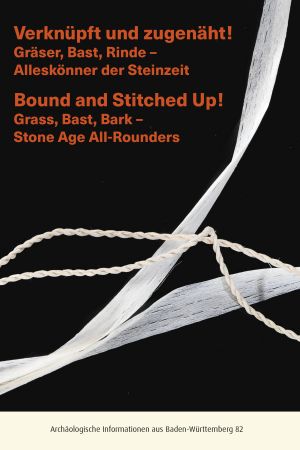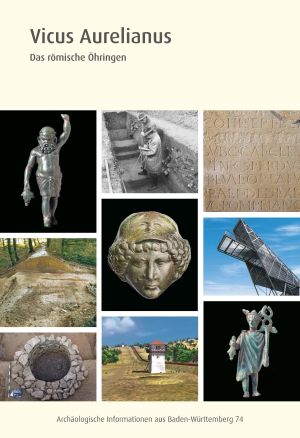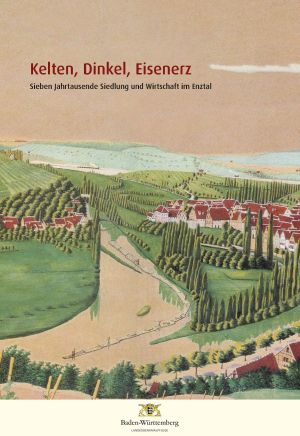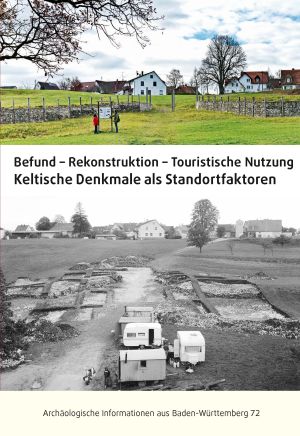Archäologische Informationen aus Baden-Württemberg
The series “Archäologische Informationen aus Baden-Württemberg” (Archaeological Information from Baden-Wuerttemberg) is self-published by the State Office for Cultural Heritage Preservation of Baden-Wuerttemberg since 1987. Issues appear at irregular intervals and have compact size and format with a typical length of 100–200 pages. The series has a focus on regional topics of archaeological heritage conservation and a predominantly popular scientific orientation. It is complemented by companion volumes for exhibitions as well as more specialized publications such as reports on scientific conferences. The thematic spectrum covers the entire range of archeology from the Paleolithic to the Early Modern Era, including related natural sciences.
The series “Archäologische Informationen aus Baden-Württemberg” on the internet site of the State Office for Cultural Heritage Preservation: https://www.denkmalpflege-bw.de/publikationen/reihen/archaeologische-informationen-aus-baden-wuerttemberg/.
Editors
Landesamt für Denkmalpflege im Regierungspräsidium Stuttgart
Berliner Straße 12
73728 Esslingen am Neckar
E-Mail: abteilung8(at)rps.bwl.de Internet: Landesamt für Denkmalpflege
Published so far
Verknüpft und zugenäht! Bound and Stitched Up ! Gräser, Bast, Rinde – Alleskönner der Steinzeit / Grass, Bast, Bark – Stone Age All-Rounders
The textiles found at the prehistoric lake dwelling settlements were true all-rounders. A wide range and variety of raw materials reveal an astonishing variety of applications. The interdisciplinary research project “THEFBO” (2018–2021) investigates the cultural and historical significance of textiles for the early agricultural communities. This booklet accompanies the touring exhibition and contains comprehensive articles from the project partners as well as interviews covering the diversity of the theme.
Hemmingen in der Vor- und Frühgeschichte
The small town of Hemmingen, which today has a population of around 7300, is located 15 km north-west of the state capital Stuttgart. It lies in the “Strohgäu”, a landscape characterised by rolling hills and gentle valleys, between the central Neckar valley and the Black Forest foothills. The region's highly fertile loess soils have been used for agriculture since the beginning of the Neolithic some 7500 years ago and throughout all subsequent eras. Numerous finds of settlements of the first farmers as well as traces of the Celts, Romans and Alamanni illustrate thousands of years of settlement history in and around Hemmingen. This booklet is based on a series of lectures of the Local History Association in Hemmingen. In addition to a short outline of the local history of research, it offers a summarising overview of the most important periods of prehistory and early history and the archaeological monuments and finds by which they are represented in Hemmingen.
Vicus Aurelianus: Das römische Öhringen
Öhringen around 200 AD: Several hundred soldiers in two forts guard the nearby Limes. Their families, traders and craftsmen live in the surroundings of the military camps. The settlement – named vicus Aurelianus – is an important sentinel of the Roman Empire on the border with the Germanic tribes. The importance of the site has been recognized by archaeology already during the 18th century. Christian Ernst Hanßelmann, one of the pioneers of archaeology of the Roman provinces, led the first excavations. He uncovered wall sections and recovered coins, ceramics, inscriptions and other finds. The Romans are still present in Öhringen today. The UNESCO World Heritage of the Roman Limes, the Weygang Museum, the Limes Views and the State Horticultural Show in 2016: We are reminded of the vicus Aurelianus in many ways.
Kelten, Dinkel, Eisenerz: Sieben Jahrtausende Siedlung und Wirtschaft im Enztal
The Enz valley connects the former countries of Baden, Württemberg and the Electoral Palatinate and at the same time the landscapes of the Black Forest, Kraichgau, Stromberg, Gäu and the Middle Neckar Region. As it has been populated since the Linear Pottery Culture, the settlement development of the region can be retraced in an exemplary way. Due to political fragmentation, however, a historical overview is still missing. The volume at hand closes this gap and illustrates the settlement, economic and environmental history of the Enz valley over the past seven millennia from an interdisciplinary perspective.
Befund – Rekonstruktion – Touristische Nutzung: Keltische Denkmale als Standortfaktoren
The “Heidengraben” on the Swabian Alb comprises the remains of a Late Celtic fortified settlement of the 2nd and 1st centuries BC. Archaeological finds and remains of ramparts visible above ground illustrate the supra-regional importance and the spatial dimensions of the Celtic oppidum, which is one of the largest in Central Europe.
On the occasion of new plans for the touristic enhancement of the large scale monument “Heidengraben”, an international colloquium was held in Grabenstetten in autumn 2013. The results of this conference are presented in this volume. The contributions deal with central questions of the reconstruction of archaeological features. However, the range of topics is not limited to specialised archaeological problems, but also deals with core aspects of a tourism concept. In this context, numerous experts from various scientific institutions and museums present “best practice” projects from Germany and Austria.











